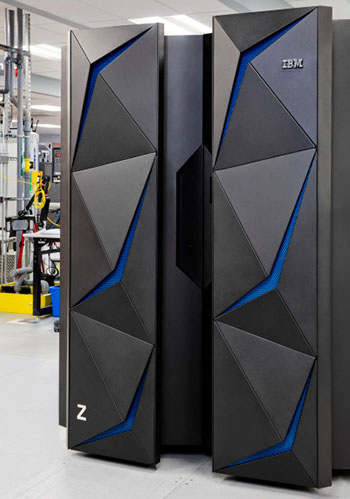
Reliability
Scalability
Security
Redundancy
Availability
Compatibility
Customization
Extreme Redundancy
One of the most obvious benefits of the mainframe environment is the incredible amount of redundancy that the mainframe features. Redundancy is the use of several identical functional units, such as several disk drives or power supply systems, within one computer system in order to provide data security and a certain degree of fault tolerance in case of hardware failures. Redundant power supplies, processors, and storage devices create a system that practically can't be taken offline.
Scalability
The ability of a system to expand as resources, such as processors, memory, or storage, are added.
Availability
The recent Mainframe Systems Z series are designed to provide an availability of 99.999%.
Reliability
Reliability is a measurement of the ability of a system to continue processing without failure. The "Z" in System Z's brand-name stands for zero down-time. System Z servers have reported an 'Mean Time to Failure' of 40 years, that means they are guaranteed to run continuously for 40 years without any failure.
Customization
Estimatesthat up to 70% of corporate production data still resides on the mainframe. This means that private clouds residing on System z have secure access to essential information that can be shared if necessary with adequate access controls, encryption, data security, data masking and integrity.
Compatibility Programs written for the IBM os/360 and later models, will still run quite happily on the latest version of IBM Z/OS, usually without even a recompile or re-assembly (that's nearly 50 years of continuous upward compatibility and reliability). IBM has been maintaining downward compatibility for every new release of hardware and software. Modern mainframes have security built into them from the ground up, both in the operating system and through cryptographic hardware acceleration. Governments, universities, and large-scale enterprises like banks, insurance companies, etc. ó all of whom have a critical requirement to keep user and internal data protected at once protected but also highly retrievable. At the kind of high-demand loads we talked about in the first point, youíll begin to see the daunting nature of that task when you realize, for example, that all of those hundreds of thousands of requests that VISA processes every second have to be both encrypted and decrypted in real time ó i.e., at a speed that wonít be noticeable to those hundreds of thousands ofsimultaneous users. Itís a task that the lower-powered servers arenít quite up to ó but one which built-in hardware acceleration of the encryption and decryption processes help the mainframe excel at.
The Mainframe Benefits
The power of IBM's Z System processor can move mountains of data, billions of instructions and supports parallel processing. A batch job that copies billions of records from one file to another file structure can take minutes instead of hours.
Multiprocessing of hundreds of simultaneous users, system tasks, online service and batch jobs will not crash a processor: a mainframe LPAR image is designed to handle heavy loads. The processor will not crash from overuse or overheating like ordinary computers.
The latest z13 mainframe uses the most powerful processor on the planet. The z13 supports up to 8000 Linux images simultaneously for cloud computing. For the mobile economy the z13 does real-time encryption and can process 2.5 billion transactions per day. For the z13, IBM spent over 1 billion dollars and five years of development and with more than 500 new patents.
Next Article: Mainframe Definitions